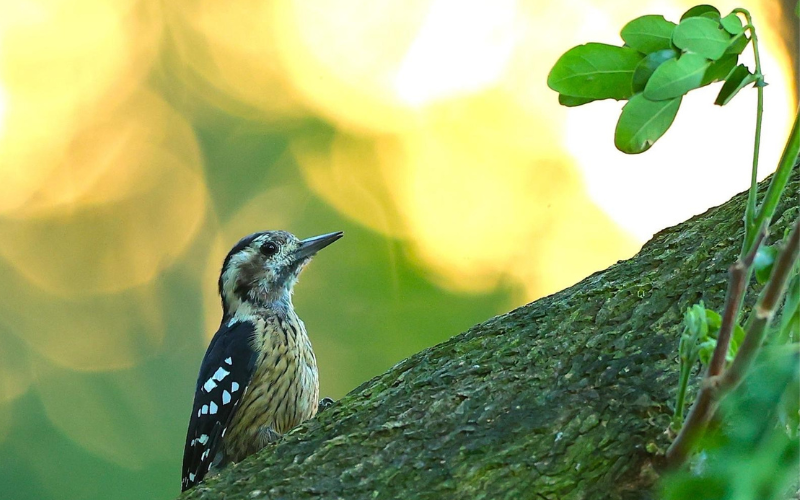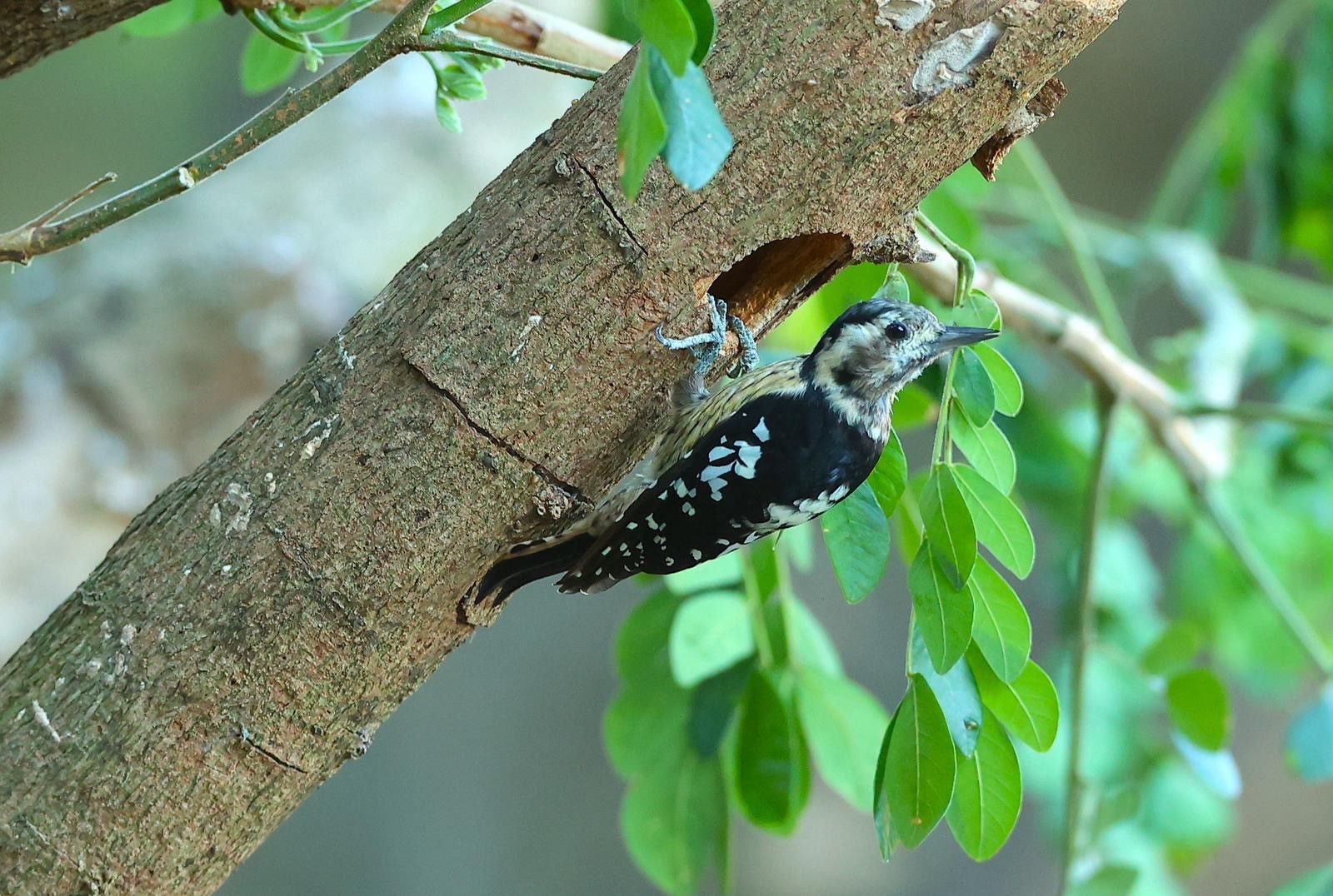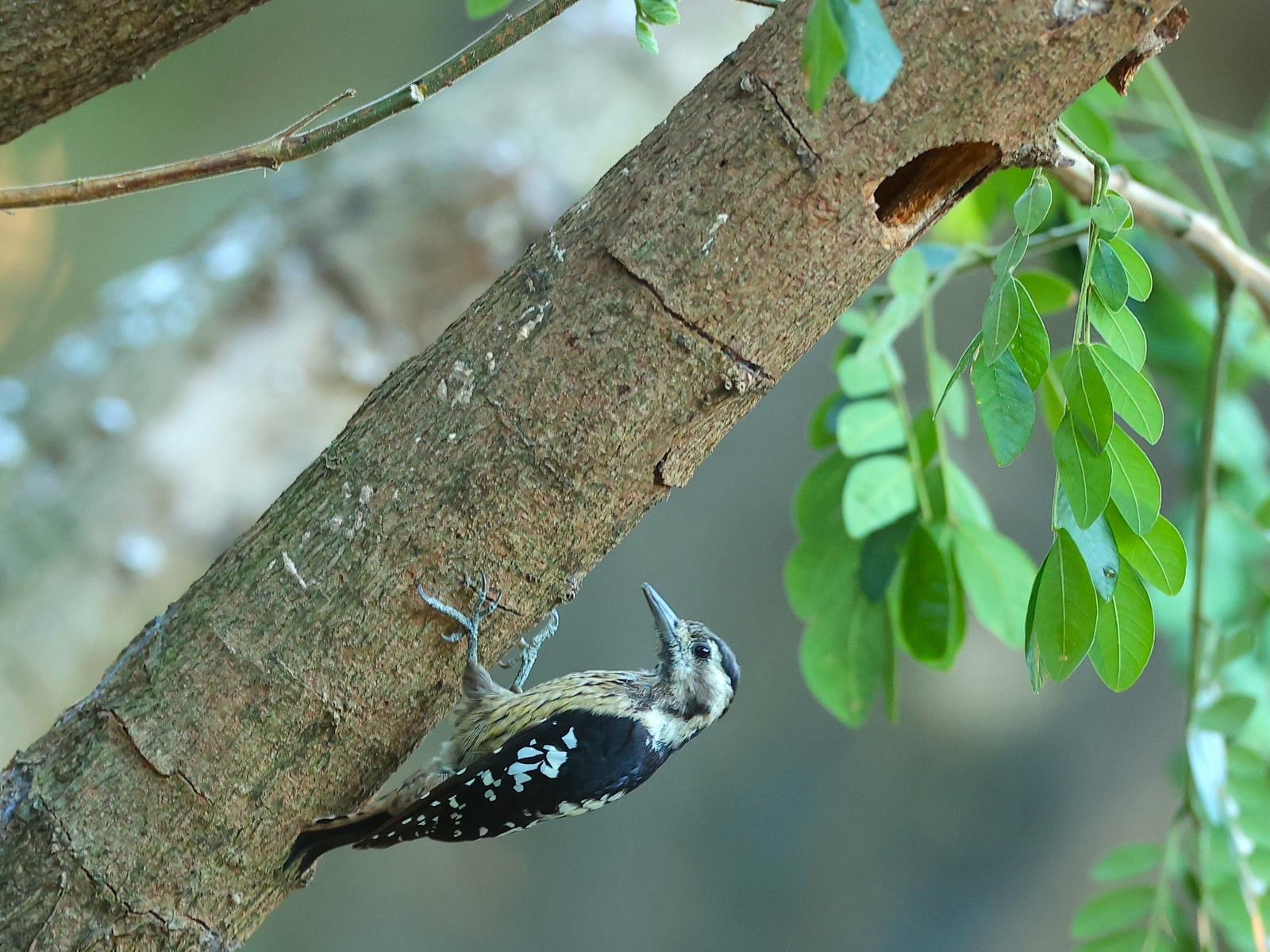The Drumming of the Forest: Woodpeckers Responded to Winbond’s Green Commitment at the Kaohsiung Fab

Amid the lush greenery of the Kaohsiung Fab, woodpeckers quietly emerged. They shuttled between branches, built nests, and perched, as if telling us: this was the habitat they had chosen. This natural response stemmed from Winbond’s long-term afforestation efforts. Based on recommendations from academic experts, Winbond systematically promoted new afforestation operations at the Kaohsiung Fab, adhering to six key principles: site suitability, species suitability, seedling suitability, timing, legality, and maintenance. Every step—from design, cultivation, land preparation to nurturing—was executed with precision and care. The five selected native tree species—Machilus, Calophyllum, Acacia, Neem, and Wax Tree—not only offered high carbon sequestration capacity but also played a vital role in Taiwan’s ecosystem.
This green space served not only as a carbon sink but also as a sanctuary for biodiversity. Winbond collaborated with National Chung Hsing University to launch a 30-year afforestation project, which was estimated to sequester up to 390 metric tons of CO₂ equivalent. More importantly, Winbond removed invasive species and planted native vegetation to create a stable natural ecosystem, encouraging wildlife such as woodpeckers to settle in the area. The presence of woodpeckers symbolized ecological restoration and affirmed Winbond’s efforts. Although no specific nesting timeline was recorded, employees captured their nesting behavior in photographs, making it the most touching annotation of this forest.
In the ecosystem, woodpeckers played multiple and critical roles:
- Pest control: With long tongues and sharp beaks, they penetrated tree trunks to catch borers and arthropods, effectively controlling forest pests. Hence, they were known as “tree doctors.”
- Nest creation: The tree cavities excavated by woodpeckers not only served as their own nests but also became shelters and breeding grounds for animals such as owls, squirrels, and tits that could not build nests themselves.
- Seed dispersers: By consuming fruits, berries, and seeds, and dispersing them during storage and excretion, they facilitated plant reproduction and forest expansion.
- Forest health indicators: The presence of woodpeckers indicated sufficient old trees and pests for survival, representing biodiversity and forest health.

They were not merely drummers of the forest but indispensable guardians of ecological balance and biodiversity. Winbond recognized that protecting biodiversity was key to sustainable development. The Chairman officially signed the “Winbond Biodiversity Commitment,” pledging to reduce environmental impacts from operations and the value chain, achieve net positive impact and zero deforestation, and safeguard ecosystem integrity. Through green manufacturing, afforestation, sustainable supply chain collaboration, and natural carbon sink research, Winbond actively mitigated biodiversity loss while promoting environmental education to raise public awareness of ecological protection. These efforts were ultimately rewarded by the woodpeckers’ presence. This was not only Winbond’s achievement but also nature’s response.



